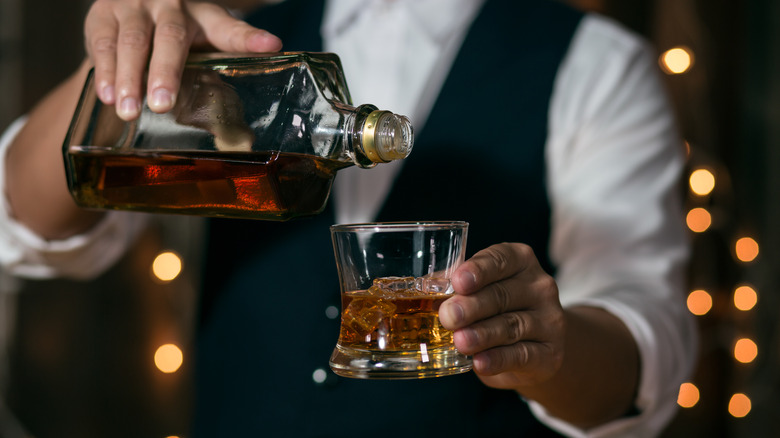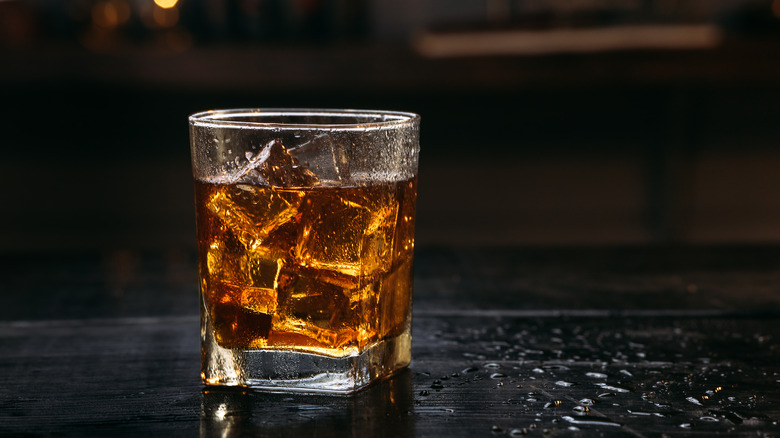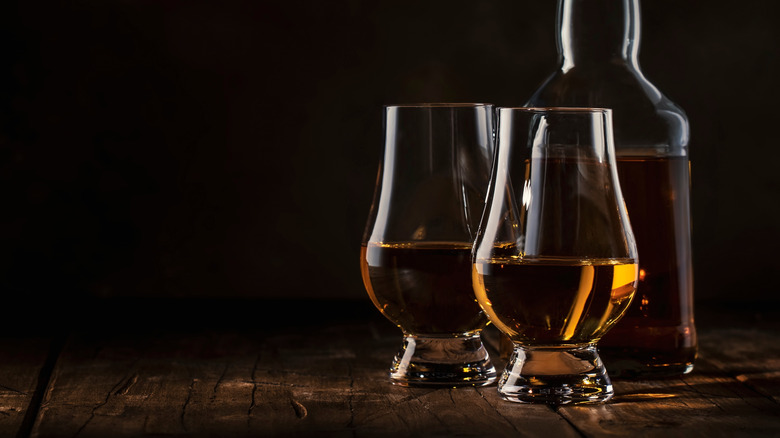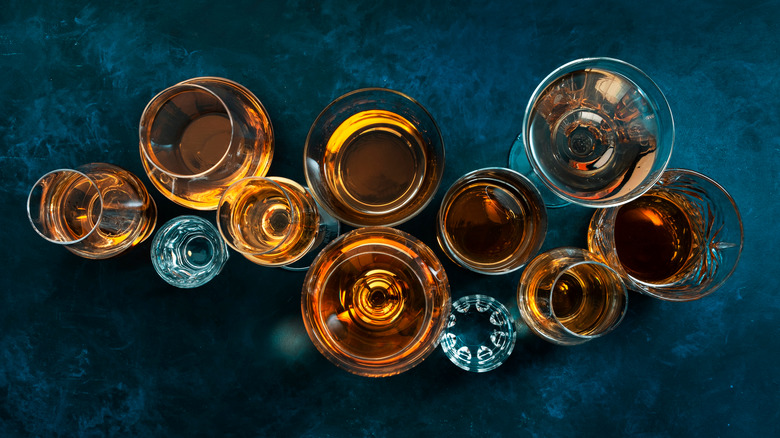What Really Happens When You Dilute Whiskey With Water
Whiskey enthusiasts often have particular convictions about the way a proper dram should be consumed. The inclusion of water to a poured glass has become a topic of division, with some connoisseurs arguing that the best tasting nips are enjoyed straight. Other drinkers insist that adding water to a neat pour can, in fact, enhance the whiskey experience.
Long before any whiskey has ended up in your hands or behind a bar, it has met the hydrating offender in question, and most likely several times over: Water is used throughout whiskey production, from steeping to fermentation to proofing — until the label is happy with the taste of the final product. Distilleries often add water to matured whiskey batches, not simply as a money-and-space saving strategy, but to cut stronger-tasting alcohols into a drink that is palatable and delivers a rich mouthfeel for enthusiasts to savor.
Even just a splash of water can amplify previously undetected flavors. The best part? There's scientific research supporting of the act of dilution.
Understanding a complicated drink
Whiskey is quite complex when it comes to chemical makeup. The compounds, fatty acids, esters, and alcohols within the drink can be found in a spectrum of concentrations and arrangements. While materials used in the distilling process and the duration of maturation can impact taste, the way in which the whiskey is served can also alter the tasting experience. By adding water, the arrangement of the molecules shifts, and the overall flavor of the drink is impacted.
Research conducted in 2017 by Scientific Reports notes that whiskey's taste is primarily associated with molecules like guaiacol. Guaiacol, a phenol often associated with Scottish whiskey, is found in higher concentrations in Scottish labels than in American and Irish bottles. By using computer simulations, researchers watched how guaiacol behaved. When a drink contained higher concentrations of ethanol, guaiacol became surrounded by ethanol molecules.
Guaiacol has one area that prefers water and one that doesn't, and the presence — or lack — of water in a drink can influence the way in which these molecules organize. With more water in a glass, guaiacol rises to the surface, impacting the smells and tastes a drinker detects, but when there's more alcohol present, these same molecules shy away from the surface, taking some of these sensory elements with them.
Optimizing the tasting experience
A big part of the whiskey-tasking experience is smell. If adding water helps flavor compounds rise to a dram's surface, by all means, proceed with caution, but cover your glass with your hand and swirl the drink to encourage the molecules to organize in an optimal fashion.
The ideal amount of water added to whiskey will vary depending on the drinker. America's Test Kitchen conducted their own experiment, presenting a series of diluted drams to participants to try to pinpoint the ideal ratio of water to whiskey. By offering samples of neat whiskey served alongside pours diluted with water, it was observed that tasters began to describe the same brand of whiskey differently.
Neat, undiluted servings were described as sweet, with notes of honey and caramel — but were also labeled to be boozy and burning. After a single teaspoon of water was added to the dram, participants began to notice additional flavors like apple and hay. After recording the participants and their responses, America's Test Kitchen found that the ideal dilution for a 65-proof alcohol was around two teaspoons of added water, resulting in tasting notes that included vanilla, apple, and pear flavors. At three teaspoons, the dram was described as watered down.
Conducting your own taste tests
The strength of the whiskey you pour will dictate how much water is ideal to add to the drink. Richer, more concentrated labels are often associated with notes of dried fruit and vanilla, while lighter, citrus notes can be more easily detected in lesser-strength blends. Keep in mind that smoky, peaty flavors often dissipate as water is added.
Reach for a brandy or whisky glass while conducting your own at-home experiments, and gradually mix in small amounts of water at a time, tasting as you go. Consider starting with a whiskey of moderate strength and understand that your dilution preferences may vary from label to label. Ideally, use spring water, and notice not only the differences in flavors that arise, but also any changes in mouthfeel as you sip the diluted samples.
When adding water to older, more nuanced whiskey labels, move slowly — very slowly — and keep a glass of neat on hand to compare with your diluted drinks. While a touch of water can open up the flavor and depth of your dram, too much H2O can cancel out the flavors your whiskey is known for.



